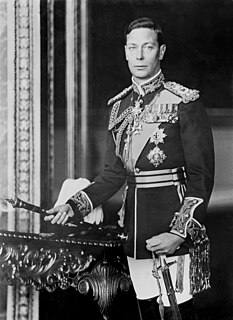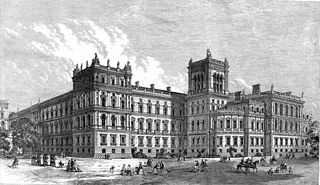
Bengal is a geopolitical, cultural and historical region in South Asia, specifically in the eastern part of the Indian subcontinent at the apex of the Bay of Bengal, predominantly covering present-day Bangladesh and the Indian state of West Bengal. Geographically, it is made up by the Ganges-Brahmaputra delta system, the largest river delta in the world, along with mountains in its north bordering the Himalayan states of Nepal and Bhutan, and east bordering Myanmar.

Urdu is an Indo-Aryan language spoken chiefly in South Asia. It is the national language and lingua franca of Pakistan. In India, Urdu is an Eighth Schedule language whose status, function, and cultural heritage is recognized by the Constitution of India; it also has an official status in several Indian states. In Nepal, Urdu is a registered regional dialect.

Emperor or Empress of India was a title used by British monarchs from 1 May 1876 to 22 June 1948, that was used to signify their rule over British India, as its imperial head of state. The image of the emperor or empress was used to signify British authority—his or her profile, for instance, appearing on currency, in government buildings, railway stations, courts, on statues etc. "God Save the King" was the former national anthem of British India. Oaths of allegiance were made to the emperor or empress and the lawful successors by the governors-general, princes, governors, commissioners in India in events such as imperial durbars.

The partition of India in 1947 divided British India into two independent dominions: India and Pakistan. The Dominion of India is today the Republic of India, and the Dominion of Pakistan is the Islamic Republic of Pakistan and the People's Republic of Bangladesh. The partition involved the division of two provinces, Bengal and Punjab, based on district-wide non-Muslim or Muslim majorities. The partition also saw the division of the British Indian Army, the Royal Indian Navy, the Royal Indian Air Force, the Indian Civil Service, the railways, and the central treasury. The partition was outlined in the Indian Independence Act 1947 and resulted in the dissolution of the British Raj, i.e. Crown rule in India. The two self-governing independent Dominions of India and Pakistan legally came into existence at midnight on 15 August 1947.

The Bengali language movement was a political movement in former East Bengal advocating the recognition of the Bengali language as an official language of the then-Dominion of Pakistan in order to allow its use in government affairs, the continuation of its use as a medium of education, its use in media, currency and stamps, and to maintain its writing in the Bengali script.

The 1947 Indian Independence Act [1947 c. 30 ] is an Act of the Parliament of the United Kingdom that partitioned British India into the two new independent dominions of India and Pakistan. The Act received Royal Assent on 18 July 1947 and thus India and Pakistan, comprising West and East regions, came into being on 15th August.

Indo-Saracenic architecture was a revivalist architectural style mostly used by British architects in India in the later 19th century, especially in public and government buildings in the British Raj, and the palaces of rulers of the princely states. It drew stylistic and decorative elements from native Indo-Islamic architecture, especially Mughal architecture, which the British regarded as the classic Indian style, and, less often, from Hindu temple architecture. The basic layout and structure of the buildings tended to be close to that used in contemporary buildings in other revivalist styles, such as Gothic revival and Neo-Classical, with specific Indian features and decoration added.
The Culture of Pakistan comprises numerous ethnic groups with their own distinct languages like: the Punjabis, Migrants, Saraikis, Paharis-Pothwaris, Sindhis, Makrani in the south; Baloch, Hazaras and Pashtuns in the west; Dards, Wakhi, Baltis, Shinaki and Burusho communities in the north. The culture of these Pakistani ethnic groups have been greatly influenced by many of its neighbours, such as the other South Asian, Iranic, Turkic as well as the peoples of Central Asia and West Asia.

The India Office was a British government department established in London in 1858 to oversee the administration, through a Viceroy and other officials, of the Provinces of British India. These territories comprised most of the modern-day nations of Indian Subcontinent as well as Yemen and other territories around the Indian Ocean. The department was headed by the Secretary of State for India, a member of the British cabinet, who was formally advised by the Council of India.

The Partition of Bengal in 1947, part of the Partition of India, divided the British Indian province of Bengal based on the Radcliffe Line between the Dominion of India and the Dominion of Pakistan. The Hindu-majority West Bengal became a state of India, and the Muslim-majority East Bengal became a province of Pakistan.

Punjab was a province of British India. Most of the Punjab region was annexed by the East India Company in 1849, and was one of the last areas of the Indian subcontinent to fall under British control. In 1858, the Punjab, along with the rest of British India, came under the direct rule of the British crown. It had an area of 358,354.5 km². The province comprised five administrative divisions – Delhi, Jullundur, Lahore, Multan, and Rawalpindi – and a number of princely states. In 1947, the Partition of India led to the province's division into East Punjab and West Punjab, in the newly independent dominions of India and Pakistan respectively.

The Dominion of India, officially the Union of India, was an independent dominion in the British Commonwealth of Nations existing between 15 August 1947 and 26 January 1950. Until its creation, the Indian subcontinent, commonly called "India" in contemporary usage, had been ruled as an informal empire by the United Kingdom. The empire, also called the British Raj and sometimes the British Indian Empire, consisted of regions, collectively called British India, that were directly administered by the British government, and regions, called the princely states, that were ruled by Indian rulers under a system of paramountcy. The Dominion of India was formalised by the passage of the Indian Independence Act 1947, which also formalised an independent Dominion of Pakistan—comprising the regions of British India that are today Pakistan and Bangladesh. The Dominion of India remained "India" in common parlance but was geographically reduced. Under the Act, the British government relinquished all responsibility for administering its former territories. The government also revoked its treaty rights with the rulers of the princely states and advised them to join in a political union with India or Pakistan. Accordingly, the British monarch's regnal title, "Emperor of India," was abandoned.

The Federation of Pakistan, also called the Dominion of Pakistan, was an independent federal dominion in South Asia established on 14 August 1947.

East Bengal was a geographically noncontiguous province of the Dominion of Pakistan covering present day Bangladesh. With its coastline on the Bay of Bengal, it bordered India and Burma. It was located close to, but did not share a border with, Nepal, Tibet, the Kingdom of Bhutan and the Kingdom of Sikkim. Its capital was Dacca.

The British Raj was the rule of the British Crown on the Indian subcontinent from 1858 to 1947. The rule is also called Crown rule in India, or direct rule in India. The region under British control was commonly called India in contemporaneous usage and included areas directly administered by the United Kingdom, which were collectively called British India, and areas ruled by indigenous rulers, but under British paramountcy, called the princely states. The region was sometimes called the Indian Empire, though not officially.

Independence Day, observed annually on 14 August, is a national holiday in Pakistan. It commemorates the day when Pakistan achieved independence and was declared a sovereign state following the end of the British Raj in 1947. Pakistan came into existence as a result of the Pakistan Movement, which aimed for the creation of an independent Muslim state in the north-western regions of British India via partition. The movement was led by the All-India Muslim League under the leadership of Muhammad Ali Jinnah. The event was brought forth by the Indian Independence Act 1947 under which the British Raj gave independence to the Dominion of Pakistan which comprised West Pakistan and East Pakistan. In the Islamic calendar, the day of independence coincided with Ramadan 27, the eve of which, being Laylat al-Qadr, is regarded as sacred by Muslims. The main Independence Day ceremony takes place in Islamabad, where the national flag is hoisted at the Presidential and Parliament buildings. It is followed by the national anthem and live televised speeches by leaders. Usual celebratory events and festivities for the day include flag-raising ceremonies, parades, cultural events, and the playing of patriotic songs. A number of award ceremonies are often held on this day, and Pakistanis hoist the national flag atop their homes or display it prominently on their vehicles and attire.

Golra Sharif Railway Museum, also known as Pakistan Railways Heritage Museum, is a railway museum located near the Sector F-13 of Islamabad, the capital of Pakistan. It is a junction station in Rawalpindi Division of the Pakistan Railways, located at 1,994 feet above sea level, in the southeast of the Margalla Hills and east of the cradle of Gandhara civilization, the ancient city of Taxila. This railway station is the site of a venerated railway museum housing the relics and memorabilia associated with railways dating back to the days of the British Raj. The railways station with its museum is a major attraction for tourists and locals alike and is becoming a major attraction for railway enthusiasts.in 1994

Muhammad Ali Jinnah was a barrister, politician and the founder of Pakistan. Jinnah served as the leader of the All-India Muslim League from 1913 until the inception of Pakistan on 14 August 1947, and then as the Dominion of Pakistan's first governor-general until his death. He is revered in Pakistan as the Quaid-i-Azam and Baba-i-Qaum. His birthday is observed as a national holiday in Pakistan.
Direct rule is when an imperial or central power takes direct control over the legislature, executive and civil administration of an otherwise largely self-governing territory.
Anarchism in Bangladesh has its roots in the ideas of the Bengali Renaissance and began to take influence as part of the revolutionary movement for Indian independence in Bengal. After a series of defeats of the revolutionary movement and the rise of state socialist ideas within the Bengali left-wing, anarchism went into a period of remission. This lasted until the 1990s, when anarchism again began to reemerge after the fracturing of the Communist Party of Bangladesh, which led to the rise of anarcho-syndicalism among the Bangladeshi workers' movement.

















